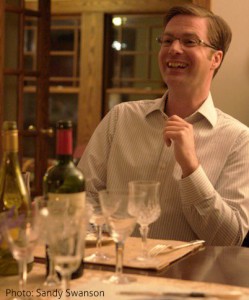
Chad Bauman
Are Subscriptions Dead? Maybe Not (Part 1)
Posted by Oct 04, 2011

Chad Bauman
When I joined Arena Stage in 2007, I came to my new job with a couple of preconceived notions about subscriptions. Perhaps it was in part a reflection that I am on the Generation X/Millennial cusp, but I was certain that the subscription model was outdated and ineffective.
Many mature organizations that had developed their business models on subscriptions were seeing significant declines in subscriber numbers, and were literally caught between a rock and a hard place -- should they dump their subscription model and leap into the unknown, or keep putting band aids on a failing and timeworn strategy? Reports from major performing arts organizations at the time seemed to indicate a trend of declining returns, forcing a feeling that immediate change to a staple in our business model could be warranted.
In early 2008, Arena Stage along with a few other League of Resident Theatres members, began to test subscription alternatives in focus groups. In doing so, I was absolutely certain that the results would show at least one, if not several, attractive alternatives to subscriptions. I was wrong.
Read More















